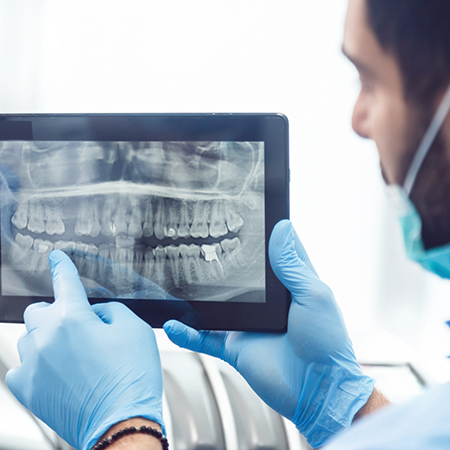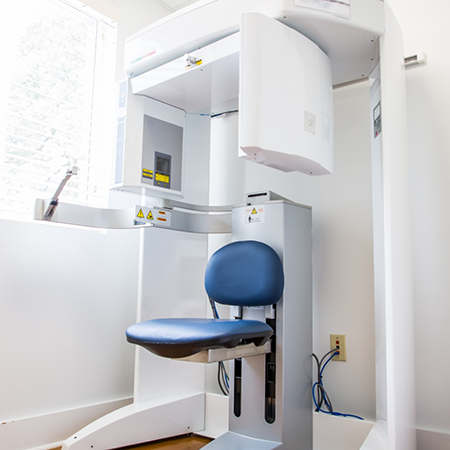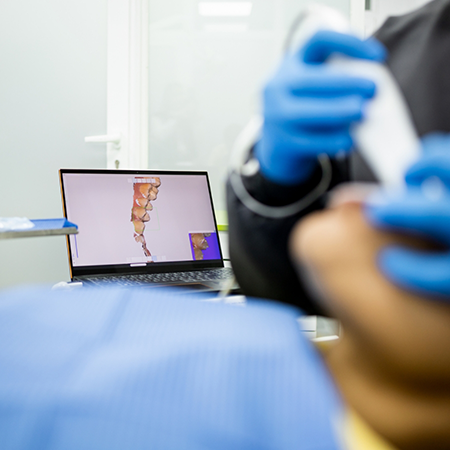Advanced Dental Technology Allen
We Use the Latest & Greatest Technology in Our Field

Dr. Kar understands that the world of prosthodontics is evolving every day, which is why he strives to stay up-to-date with the latest advancements. In doing so, he regularly incorporates new technology into his practice to make both the diagnostic and treatment aspects of each of his patient’s care as precise as possible. Read below to learn more about some of the advanced dental technologies we use in our Allen dental office.
Cone Beam CT Scanner

Traditional digital X-ray imaging allows for a high-quality image, but it’s two-dimensional and focuses on the teeth, helping identify problems like cavities. Our cone beam CT scanner is able to capture a 3D rendering of the entire facial structure, allowing Dr. Kar to view the density of the jawbone, location of the facial nerves and sinuses, and much more. This is especially helpful when it comes to planning surgical procedures like dental implant placement.
Intraoral Scanner

Our intraoral camera allows us to gain an up-close and more detailed view of areas of the mouth that are hard to see with the naked eye. As a result, we’re able to more accurately diagnose the severity of certain conditions as well as show you a visual resource while describing our findings during your examination. It also captures both still images as well as live video footage, so we can more easily keep track of how cavities and other issues progress over the years by digitally storing these.
Dental Laser

Dental lasers are especially helpful when it comes to conducting surgical and cosmetic dentistry procedures, as they allow Dr. Kar to precisely shape soft and hard oral tissues to place dental implants and other restorations more accurately. This technology allows patients to experience shorter recovery periods, less post-operative bleeding, and have an overall more comfortable procedure.
Intraoral Camera

Our intraoral camera enables both you and Dr. Kar to get a much better look at your smile. This small, pen-sized instrument fits comfortably in the mouth to capture high-resolution images of the teeth and gums that our team can then display on a nearby monitor. These images not only make it easier for Dr. Kar to spot issues sooner, but they’ll help you literally gain a whole new perspective on your dental health, turning your appointments into a fun, interactive, and educational experience.
